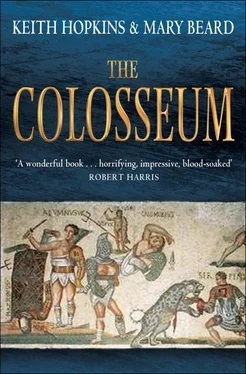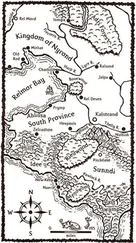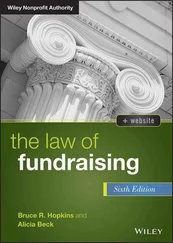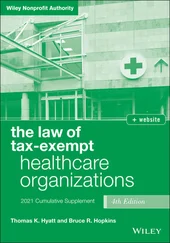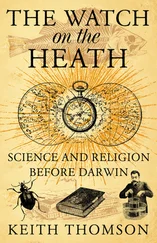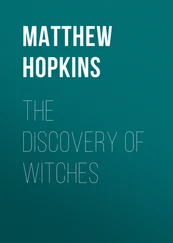Keith Hopkins - The Colosseum
Здесь есть возможность читать онлайн «Keith Hopkins - The Colosseum» весь текст электронной книги совершенно бесплатно (целиком полную версию без сокращений). В некоторых случаях можно слушать аудио, скачать через торрент в формате fb2 и присутствует краткое содержание. Город: London, Год выпуска: 2011, ISBN: 2011, Издательство: Profile Books, Жанр: История, на английском языке. Описание произведения, (предисловие) а так же отзывы посетителей доступны на портале библиотеки ЛибКат.
- Название:The Colosseum
- Автор:
- Издательство:Profile Books
- Жанр:
- Год:2011
- Город:London
- ISBN:9781846684708
- Рейтинг книги:3 / 5. Голосов: 1
-
Избранное:Добавить в избранное
- Отзывы:
-
Ваша оценка:
- 60
- 1
- 2
- 3
- 4
- 5
The Colosseum: краткое содержание, описание и аннотация
Предлагаем к чтению аннотацию, описание, краткое содержание или предисловие (зависит от того, что написал сам автор книги «The Colosseum»). Если вы не нашли необходимую информацию о книге — напишите в комментариях, мы постараемся отыскать её.
The Colosseum — читать онлайн бесплатно полную книгу (весь текст) целиком
Ниже представлен текст книги, разбитый по страницам. Система сохранения места последней прочитанной страницы, позволяет с удобством читать онлайн бесплатно книгу «The Colosseum», без необходимости каждый раз заново искать на чём Вы остановились. Поставьте закладку, и сможете в любой момент перейти на страницу, на которой закончили чтение.
Интервал:
Закладка:
Earthquakes and other natural disasters no doubt helped in this process of quarrying; with each new tremor more building material would become easily available. But, however it fell down, the great missing stretch of the main perimeter wall of the monument ended up in the architectural masterpieces of renaissance Rome. Apart from its luck in withstanding earthquakes, the surviving northern wall of the perimeter seems to have been preserved partly at least in the interests of papal ceremonial: it lay directly on the road from the church of St John Lateran (to the east of the Colosseum) to the centre of the city, one of the main routes for religious processions. Rather than plunder this impressive backdrop, they allowed the dismantling of what was then the back of the monument to the south.
There is something satisfying as well as slightly sad in the thought of stone from Vespasian and Titus’ amphitheatre having a second life in the steps of St Peter’s or the Palazzo Venezia (from whose balcony Mussolini famously addressed the crowds in the square below). Part of the attraction of the city of Rome is exactly this type of use and re-use, and the way the ancient city is literally built into the modern city that followed it. Yet there is an unsettling irony in some of the connections here: not least is the fact that several of the buildings whose design was inspired by the Colosseum were actually built with stone taken from the Colosseum. If the process had continued there would have been little left to inspire.
Ruins are not just plundered, however; they are also colonised. At the same time as stone was being removed from the site by the cartload, other parts of the building were being taken over for all sorts of domestic and commercial use. Some of this was the predictable kind of squatting. From the sixth century there are traces of animal stalls and shacks and haylofts (something of a well-deserved come-down, we cannot help thinking, for those parts of the building through which senators had once glided without having to cross the path of the lower orders). This kind of occupation continued for centuries, documented in legal records of ownership which refer to small houses, gardens, courtyards and boundary walls nestling in and around the building, and to their owners as blacksmiths, shoemakers, lime-pit workers and so forth. It was here that one early sixteenth-century artist found inspiration for an image of the Nativity, turning this shanty village into a convincing recreation of the humble stables of Jesus’s birth. But it is now hard to recover much substantial evidence of these medieval settlements. The problem, as usual, is that most of the post-classical material was removed by archaeologists in the nineteenth century, who had eyes only for the classical amphitheatre and its decoration (though occasionally they mistook a medieval wall for an ancient one and preserved it!). What is left are some scattered fragments of pottery, glass and metals, and the traces of inserted partitions, patched-up floors and the predictable troughs and mangers. This farmyard air (and smell) continued well into the eighteenth century when – the grandiose industrial schemes of Sixtus V having come to nothing – a manure dump, for use in making saltpetre, was established in 1700 in the north corridors of the Colosseum. The dump remained there for a century, seriously corroding the stonework in the process.
Not all the occupation in the Colosseum was quite so down-at-heel. In the middle of the twelfth century part of the building was taken over by the so-called ‘Frangipane Palace’. The Frangipane were one of the families of warlords who dominated Rome at the time. Like several others, they established their fortresses (‘palace’ is a misleadingly domestic euphemism) in such ancient buildings as still stood: the Colonna family took over the Mausoleum of the emperor Augustus, the Savelli the Theatre of Marcellus. It is a tradition which has not, in fact, entirely died out: there are a number of expensive private apartments, even now, in the upper floors of the Theatre of Marcellus. In the Colosseum, the Frangipane occupied a substantial portion of the eastern side – about thirteen arches in extent – on two levels. They had an extensive residence in other words, even if, we suspect, rather draughty; and for Carlo Fea, in the famous early nineteenth-century dispute ( p. 138), they were the prime suspects for inserting the substructures in the arena, which he believed to be medieval. The Frangipane lost control of the Palace in the mid thirteenth century to the rival Annibaldi family, who eventually sold it in the 1360s to the Christian ‘Order of St Salvator’. During their ownership, the Annibaldi are said to have entertained the poet and humanist Petrarch in the Colosseum in 1337; and they would, of course, have had a ringside seat at that bullfight in 1332. Although disused by the sixteenth century, traces of this palace are still visible on site.
What eventually, albeit slowly, brought this re-use of the Colosseum to an end were the activities and pressure of two other groups with an interest in the building. Since as early as the fifteenth century, antiquarians had objected to the despoiling of the ancient monument. Poggio was not the only intellectual to complain of the Colosseum disappearing in the builders’ carts and we shall soon turn to look at the increasingly powerful effect of this archaeological voice. But of more immediate impact in changing the culture of the Colosseum were the interests of the Christians – or rather (as, strictly speaking, almost everyone involved in this part of the Colosseum’s story, from the plundering popes to the Frangipane, were Christians) that growing sense among some members of the Christian community that the Colosseum was a building of special religious significance. The place where, as they believed, so many saints and martyrs had died ought to be a hallowed place of worship, and certainly should not be tainted with bullfights, squatter occupation and piles of manure.
CHRISTIANS
On the outer face of the east wall of the Colosseum there is an inscribed plaque, put up on the orders of Pope Benedict XIV in 1750; it replaced (as it states) an earlier text painted on the walls of the building in 1675, which after nearly a century had faded. Written in Latin, it celebrated the sacredness of the Colosseum in these terms:
The Flavian amphitheatre, famous for its triumphs and spectacles, dedicated to the gods of the pagans in their impious cult, redeemed by the blood of the martyrs from foul superstition. In order that the memory of their courage is not lost, Pope Benedict XIV, in the jubilee of 1750, the tenth year of his pontificate, had rendered in stone the inscription painted on the walls by Pope Clement X in the jubilee of 1675, but faded through the ravages of time.
This was the high-water mark of the cult of the Christian martyrs in the Colosseum. The inscription was intended permanently to define the monument as the site of the Christian victory over paganism. The year before, in 1749, Benedict had pronounced it sacred ground, dedicated to the Passion of Christ, and threatened punishment for any desecration.
There is, in fact, as we saw in Chapter 4, not a shred of contemporary evidence that any Christians were ever martyred in the Colosseum for their faith. A number of Christian accounts of the lives and deaths of the saints, written from the fifth century on, attempt to fill out and embellish the historical details by claiming that they were killed ‘ in amphitheatro ’. But there is no reason to suppose that the Colosseum is always meant or, when it is, that the location is anything more than plausible guesswork. More to the point, although it seems to us inconceivable that this tradition should have been completely forgotten through the Middle Ages, the standard medieval view of the building certainly did not link the Colosseum with the fate of the saints. Although other shrines associated with martyrs were keenly venerated, there is no sign of any religious appropriation here. Significantly, the pilgrim-guide to the Wonders of Rome picks out, for example, the Circus Flaminius (another Roman spectacle arena) as a place of martyrdom, while the Colosseum appears as a ‘Temple of the Sun’.
Читать дальшеИнтервал:
Закладка:
Похожие книги на «The Colosseum»
Представляем Вашему вниманию похожие книги на «The Colosseum» списком для выбора. Мы отобрали схожую по названию и смыслу литературу в надежде предоставить читателям больше вариантов отыскать новые, интересные, ещё непрочитанные произведения.
Обсуждение, отзывы о книге «The Colosseum» и просто собственные мнения читателей. Оставьте ваши комментарии, напишите, что Вы думаете о произведении, его смысле или главных героях. Укажите что конкретно понравилось, а что нет, и почему Вы так считаете.
